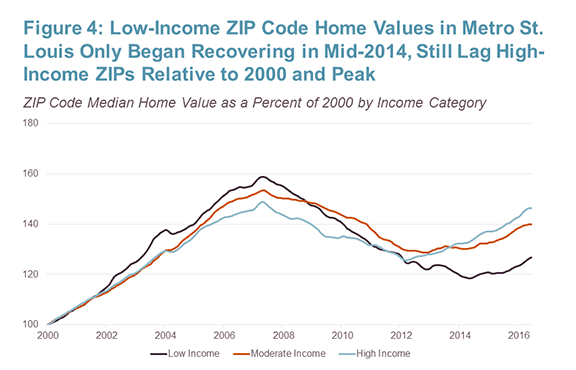 |
| by Alexander Von Hoffman Senior Research Fellow |
In 2014, JPMorgan Chase & Co. (JPMC) initiated the Partnerships for Raising Opportunity in Neighborhoods program (PRO Neighborhoods) to provide grants to groups of collaborating CDFIs that devise innovative and efficient ways to inject capital into economically depressed and disinvested neighborhoods. JPMC initiated the program with awards of $33 million over a three-year period to seven groups made up of 26 CDFIs with less than $75 million in net assets. With these grants, JPMC hoped to increase the scale and scope of CDFI lending, encourage the creation of new financial instruments for community development, and stimulate the use of quantitative data in community development programs and planning.
In a diverse set of collaborations, the seven awardees carried out a wide array of programs in communities across the country. These ranged from helping mobile-home residents purchase the land on which they live to lending to homebuyers and small-business owners in predominantly low- and moderate-income Latino communities throughout the Southwest.
As CDFIs, the awardee collaborations all made loans. Most of these loans went to help owners of single- or multi-family housing or small businesses, but some went to other types of borrowers. For example, one of the collaborations, the Midwest Nonprofit Lenders Alliance, issued facility purchase and improvement loans to nonprofit organizations, including a social service agency, an arts center, and a food provider to the chronically ill.
But the 2014 PRO Neighborhoods awardees engaged in activities other than loaning money as well, including marketing, education and training, and the development of technology. In all, the CDFIs dedicated $6 million of the $33 million in total awards to non-lending activities.
In a new progress report on the first round of PRO Neighborhoods awardees, the Joint Center for Housing Studies found the work of the awardees showed the ability of CDFIs to form diverse types of collaborations, increase financing, and devise novel forms of community development projects. So far, the 2014 PRO Neighborhoods awardees have provided 1,263 loans totaling over $239 million to support low- and moderate-income communities. These loans supported the creation or preservation of 1,616 units of affordable housing and 4,432 jobs, two of the key building blocks of community revitalization.
In addition, the awardees used their grants to attract capital from other sources and thus extend the reach of their lending, one of the main goals of the PRO Neighborhoods program. Taken together, the awardees used $26 million of JPMC capital to leverage an additional $351 million of outside money to support either their own lending or the projects in which they invested.
At the same time, awardees engaged in innovative collaborations. The Chicago CDFI Collaborative, for example, brought together three nonprofit lenders to target a long-standing unmet need in depressed inner-city neighborhoods—rehabilitation of 1–4 unit residential buildings—and to offer financing to support every phase of the rehabilitation process. In the Adelante Phoenix! collaborative, the Raza Development Fund provided guarantees to MariSol Federal Credit Union for its new consumer products, including immigration-aid loans and DREAMer student loans.
As the PRO Neighborhoods Progress Report 2016 report indicates, with sufficient capital, collaborations of CDFIs hold great potential for increasing the scale, scope, and territory of community development lending. Over the next two years, the Joint Center for Housing Studies will continue to follow the progress and challenges not only of the 2014 PRO Neighborhoods awardees but also of the CDFIs collaborations selected for 2015 and 2016 awards. In reports, blog posts, and case studies concerning the PRO Neighborhoods program, we hope to illuminate the possible ways alliances of CDFIs can improve the lives of people living in America’s low-income neighborhoods.
Read PRO Neighborhoods Progress Report 2016










